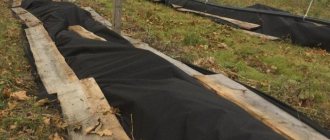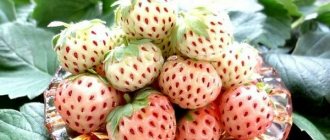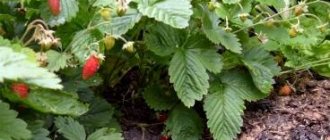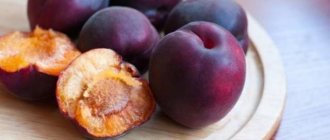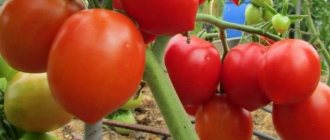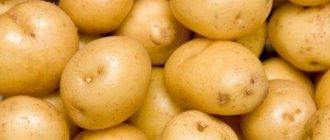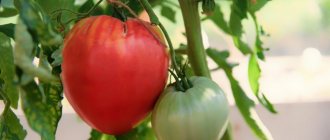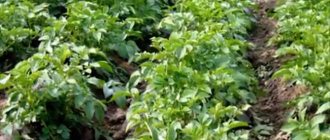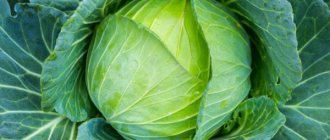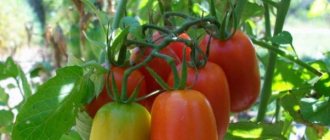How do you usually pick strawberries? Probably individual berries, putting them directly into the mouth, or handfuls, cups, occasionally, small buckets or saucepans. But there are varieties that are distinguished by such sizes and yields that they can be collected quite easily in boxes and barrels. For example, according to the originator, when picking Darselect strawberries, you can collect up to 25 kg of berries in one hour of work. Just imagine such a huge number of berries - truly this variety of garden strawberry, living up to its name, seems even to an experienced gardener a real gift from breeders.
But not everything is as simple as it seems at first glance. To achieve such yield and productivity, you need to work hard. However, for gardeners who have been growing strawberries for many years, this fact is not news at all. Strawberries are a berry that requires constant care and considerable effort, but how nice it is to enjoy the tasty and aromatic fruits of your labors after harvesting.
Description of the variety
Bushes
Erect Darselecta bushes are characterized by large dimensions and a powerful root system. The leaves are three-lobed, round in shape, abundantly covering the bush, creating a dark green “cap”. The dark shape of the leaf blade harmonizes well with the light veins, the plant looks very decorative. The serrated edges of the leaves further complement the visual effect. The pubescence is weak, there are practically no hairs on the stems and leaves.
The formation of new growth buds occurs in late August and early September (with short daylight hours and cooler conditions). The number of whiskers is moderate, but they are enough for reproduction. The advantage of a small amount of mustache is that it does not thicken the plantation.
Berries
The Darselect strawberry variety is distinguished by its early fruiting: mass harvesting of berries begins already in mid-June. Flowering occurs at the end of May, so the interval between flowering and fruiting is quite short. The fruit collection period is not extended and is about two weeks. In most of the territory of Russia there is a danger of flowers being frozen by return frosts.
Characteristic features of the fruit:
- elongated cone shape with a rounded tip;
- weight – 20-40 g, maximum weight – 50 g;
- color red with a brick tint;
- taste close to strawberries;
- the surface is shiny with deeply depressed seed pits;
- the flesh is dense and elastic;
- slight wateriness;
- high shelf life and transportability.
Note: The berries change shape throughout the season from conical to oval, and at the end of the growing season deformed fruits appear. This is primarily due to low temperatures and high humidity and, as a result, poor pollination.
Productivity
Abundant fruiting of the Darselect variety lasts no more than 4 years, after which the plantation is renewed. One bush produces up to 800 g of strawberries; with proper agricultural technology, this figure can reach 1 kg. Due to the large size and hard stalk, picking berries does not cause any difficulties and goes quickly.
Reproduction
Darselect strawberries can be propagated in several ways:
- Growing seeds is a rather complex and painstaking process, especially for beginners.
- Dividing the root. Select several root shoots with a powerful root system and divide them into parts.
- Sockets. The tendrils are rooted by bending them close to the ground, fixed with wire or sprinkled with soil. You should choose powerful plants 1-2 years old as a mother bush.
- Seedlings purchased from specialized nurseries.
a brief description of
The Darselect variety is a universal variety. Due to its rapid ripening and good transportation, it is used for commercial purposes. Its other advantages include:
- large berry size;
- early fruiting;
- good shelf life without changing color;
- rich (forest) flavor notes.
Strawberry Darselect also has a whole bunch of disadvantages:
- requires quality care;
- short fruiting periods;
- low resistance to pests and diseases;
- needs frequent, abundant watering;
- instability to frosty winters.
Disadvantages create certain difficulties and restrictions for the widespread distribution of the variety.
Darselect is strongly affected by mites; treatment with Envidor is recommended to combat the pest.
Diseases and pests
The Darselect variety is quite resistant to diseases and pests, but sometimes strawberry bushes are affected by:
- powdery mildew;
- gray mold;
- late blight.
Significant harm to Darselect strawberries, including wilting and death, can be caused by:
- spider and strawberry mites;
- aphid;
- wasps.
Attention! It is necessary to inspect Darselect strawberry bushes daily, especially in summer. This will allow timely identification of pests or signs of disease.
To protect against diseases and pests, you can use specialized solutions or infusions prepared independently. You can spray Darselect strawberry bushes with 3% Bordeaux mixture, previously diluted with water in a 1:1 ratio. This solution protects well from diseases and repels pests - 2 g of boric acid per 10 liters of water.
Landing
Darselect strawberries, like their relatives, require a sunny, well-lit place without drafts. Planting on a slight slope is possible, but not in lowlands, where berry growers are at risk of excessive waterlogging.
Basic landing rules:
It is recommended to plant seedlings in the fall, in advance of frost, so that they have time to take root and prepare for the winter period. You can also plant in the spring. During spring planting, the first year they get rid of the ovaries so that the plants become stronger and spend energy only on building up green mass and growing the root system.
Use a ribbon or checkerboard planting method, maintaining a distance of at least 30x30 cm between bushes.
The holes are dug to a sufficient depth so that the root system of the seedling has enough volume of the hole to prevent the roots from bending. Trimming the root tips of this variety is not recommended.
A handful of humus and a little ash are added to the hole, the plant is planted, watered, and mulched with peat or sawdust.
Note: Planting in agrofibre has become a popular way of cultivating strawberries. Cuts are made in the film crosswise every 30 cm. Holes are dug in the cuts and strawberry bushes are planted. This way they are protected from weeds and there is no need for loosening.
Features of agricultural technology
Darselect garden strawberries are not for beginners who have not yet mastered the skill of recognizing the needs of a berry crop. If you treat the agricultural technology of the described variety as unnecessary care (other strawberries grow on their own!), then you won’t even be able to taste a 5-point berry. Labor, and during unfavorable weather periods, daily attention - these are the conditions when a gardener receives a worthy reward.
Standard agricultural technology in strawberry beds for those who live in a comfortable climate:
- mild short winter with snow;
- generous sun that does not burn the greenery;
- fertile lands;
- periodic rains.
In other regions, you will have to make an effort to get what you want from Darselect.
Growing and care
Watering
Strawberries of the Darselect variety are lovers of moisture. On plantations, it is advisable to install drip irrigation or use furrow irrigation. In frequent farms, each plant is watered at the root. The variety tolerates high temperatures and drought only with regular watering. Without irrigation, the berries become smaller, the leaves wither, and there is no harvest to be had.
Loosening, weed control
Important measures, the periodic implementation of which guarantees the preservation of moisture in the soil and relieves plantings from being overcrowded. Weeds not only take nutrients from the soil, but pests migrate from them to strawberries.
If the soil is mulched, then loosening is rarely carried out; you just need to monitor the thickness of the mulch and, if necessary, add a small layer of fresh mulching material. When the ground is covered with agrofibre, there is no need for mulch.
Removing a mustache
The Darselect variety is not distinguished by an abundance of tendrils (especially during dry periods), which greatly facilitates care and eliminates the issue of planting density. The mustache is trimmed when it appears. After fruiting, their growth does not pose a threat to the harvest. For the purpose of propagation, uterine bushes are left, intended only for vegetative shoots. The flower stalks on them are torn off and the berries are not collected.
Top dressing
Humus, humus, and compost are used as fertilizers during the growing season. Use infusions of mullein or bird droppings. At different periods of life, strawberries need certain nutrients:
- in the spring, urea or mullein infusion containing nitrogen is added;
- during the period of bud formation, potassium compounds are introduced (potassium nitrate, wood ash);
- during the development of ovaries, foliar fertilizing with microfertilizers is useful;
- In the fall, phosphorus-potassium mixtures are added for a good wintering.
Note: Darselect strawberries practically do not bear fruit in the first year, and the number of berries is significantly reduced by the 4th season. In order not to suffer losses, farmers, through fertilizing, “force” the variety to bear fruit in the spring of the next year after planting.
Pest and disease control
Darselect is not resistant to “attacks” of pests and diseases. Spider mites settle on strawberries, and the most annoying diseases are purple spot and verticillium. In defense of the variety, it should be said that it is quite resistant to late blight.
The best control measure is prevention. It is necessary to monitor the condition of the bushes weekly, identifying the disease. Do not thicken the plantings so as not to aggravate the problem. Preventive treatment with phytosporin and Bordeaux mixture will also bear fruit. If the damage is severe, part of the plantation will have to be removed.
Preparing for winter
In the fall, the bushes are inspected, removing diseased or old plants, cutting off the lower leaves and thoroughly watering the bushes. Moisture-recharging watering and autumn fertilizing will help the plant to overwinter well.
Breeders claim that Darselect is resistant to frost down to -23C. However, judging by reviews, the variety can die at higher temperatures, so it requires careful shelter even during snowy winters. The shelter consists of a layer of mulch, a layer of foliage, spruce branches, and agrofibre, which is used to lift the bushes from above.
Reproduction
The variety reproduces well by dividing the bush and layering. The plantation must be constantly updated, since abundant fruiting lasts only 3 years. Darselect has a good survival rate, but in the first year it grows slowly, which is why there are few berries in the first season.
Use mother plants, carefully separating the tendrils in the 3-leaf phase. The seedlings should already have a small root system formed.
Characteristics of the strawberry variety Darselect
The variety is moisture-loving, although it tolerates 40-degree heat. At temperatures above 30 °C, strawberries need drip watering. When approaching 40 °C, the plant should be shaded with a net or reflective film. Without such measures, berry loss may occur.
Darselect strawberries easily tolerate heat, but when the temperature rises to 40 °C, the bushes need to be shaded
The variety is not frost-resistant. Low snow winters and frosts below 20 °C force gardeners to cover their plantings to protect them from freezing.
Advantages of the variety:
- large fruits;
- rich dessert taste;
- high transportability;
- resistance to heat;
- Suitable for commercial cultivation.
Disadvantages of the variety:
- reduction and deformation of fruits towards the end of fruiting;
- the need for constant watering, especially in dry summers;
- with a lack of moisture - separation of the stalk along with the pulp, the appearance of voids inside the berry.
Video: Darselect - guest from France
Reviews
Darselect is the second variety after Syria according to my taste preferences. Sweet, aromatic with a pronounced strawberry flavor. I grow strawberries using a system I developed myself. The first two years the bushes grow in ribbons, and in the third year I leave the mustache and turn the ribbons into a carpet. Starting from the third year, the yield of the variety decreases, and the carpet of mustache allows you to maintain the yield, the only thing is that the berries will become smaller.
“French” Darselect has the features of southern varieties, but with proper care and constant supervision it can be grown in the middle zone. In a sunny, warm summer, she will delight her owners with delicious sweet berries with a strawberry flavor.
Origin and official registration
“Darselect” was bred by breeders of the research center for the development of new varieties of fruit and berry crops Planasa (Le Barp, France) in 1998 by crossing the recognized leaders “Elsanta” and “Parker”. The variety is adapted to the continental climate, therefore it is suitable for cultivation in open ground in the middle zone and southern regions of Russia, almost throughout the entire territory of Ukraine and Belarus. Productive in greenhouses and greenhouses, suitable for growing in small containers (hanging pots or balcony boxes). The variety also demonstrates excellent results on substrate and hydroponics.
Darselect provides the highest yields when grown in greenhouses and hotbeds
The variety has not received official registration in the State Register of the Russian Federation, but its distribution involves both prestigious foreign nurseries of strawberry seedlings (Flevoplant, Planasa, Van den Elzen, Henselmans, etc.) and agricultural firms in Russia and other post-Soviet countries that sell planting imported or home-produced material.
When purchasing strawberry seedlings, do not forget that advertising descriptions may not actually live up to gardeners’ expectations. The productivity of the variety and the taste of the berries, like any other variety of crop, largely depend on the weather and climatic conditions of the growing region and the level of intensity of agricultural technology.
Photos from the websites of manufacturers of planting material of the variety
Harvest and storage
During harvesting, it is better to collect the berries along with the stalks for greater preservation. It is better to do this in the morning, when the dew has dried, or in the evening, when the sun's rays are no longer hot. Cloudy weather is also suitable. It is not recommended to pick berries on a rainy day, as they will be soggy and deteriorate much faster. A birch bark box would be a good container for the harvest. If you plan to use garden strawberries fresh immediately after picking, then the material of the container will no longer be of particular importance.
The berries of the Darselect variety are not only large and juicy, but also healthy - they contain vitamins and microelements necessary for the body
Darselect berries contain manganese, potassium, phosphorus, vitamins B and C and many other useful components, so eating fresh garden strawberries brings many benefits. The harvest can be processed - rubbed with sugar, made into jam, jam, or decorated with berries for a dessert. Freezing in plastic containers is also possible. In plastic bags, berries will lose their attractiveness and beneficial properties. After defrosting, they retain their best qualities for a short period of time.
Freshly picked garden strawberries can be stored indoors for no more than a day; in the refrigerator, this period will increase to a maximum of 3 - 4 days, so it is important to immediately determine for what purpose you need them
Pay attention to the quality of the collected berries. Remove damaged and moldy ones to prevent rapid deterioration of the entire crop.
What is "darselect"
Not every gardener, especially in the outback, has heard of the Parker strawberry. But the name of the Elsanta variety is familiar to the army of summer residents. The standard garden strawberry is not called Elsanta by any other name. At the turn of the millennium, the French crossed these varieties, obtaining worthy offspring from recognized parents - “darselect”. With such an eminent pedigree, the new product quickly conquered Europe.
Russian, Ukrainian, Belarusian gardeners and farmers are taming a Frenchwoman with character: the “darselect” strawberry is sometimes hot, sometimes windy, sometimes dry, sometimes cold. But gardeners are working hard, trying to adapt the variety to unusual conditions.
Varietal features
The Darselect variety is characterized by the following:
- Medium-early ripening dates: in the south closer to early, in the Central regions - to medium.
- Not repairable. According to reviews, there are attempts to bloom in the fall when the weather is favorable. But the bushes do not produce a harvest.
- Large-fruited: with a minimum of effort - 20-30 g. For the additional investment of labor and time, 50 g will be rewarded with berries. Record holders for the first fruits of the season - 70 g.
- Productive: at least 600-700, if you don’t invest too much. A diligent gardener will receive up to 1.2 kg.
- It can withstand heat with difficulty if there is not enough moisture. Water shortages not only reduce crop yields. Plantations die if they are not watered on time.
- It will not survive on leached soils with a high content of carbonates. Such soils are characterized by a pH above 7. And strawberries love a slightly acidic or neutral environment.
- “Darselect” resists rot and spotting, but rarely copes with verticillium and powdery mildew without prevention.
- Peak productivity is in the 2nd-3rd year, after which the plantation is renewed.
- The growth is sufficient to replace outdated bushes with young rosettes.
- Manufacturers claim frost resistance is below average: if the temperature drops to -20, and the beds are not prepared for wintering, even a snow cushion will not save. Without any problems, “darselect” overwinters with gardeners and farmers from regions with mild winters. And Siberians have to reliably cover their beds.
- Presentation, shelf life, transportability - three more reasons for the highest rating.
In Europe, garden strawberries “darselect” are positioned as a commercial variety. The last item on the list explains why farmers love Frenchwort: it does not wrinkle or flow during transportation, even in a state of biological maturity.
Industrialists value the variety for the short period between the first flower and the ripe berry. Capricious in the open air, strawberries are docile and generous in greenhouses, and ripen simultaneously with the earliest ripening varieties.
